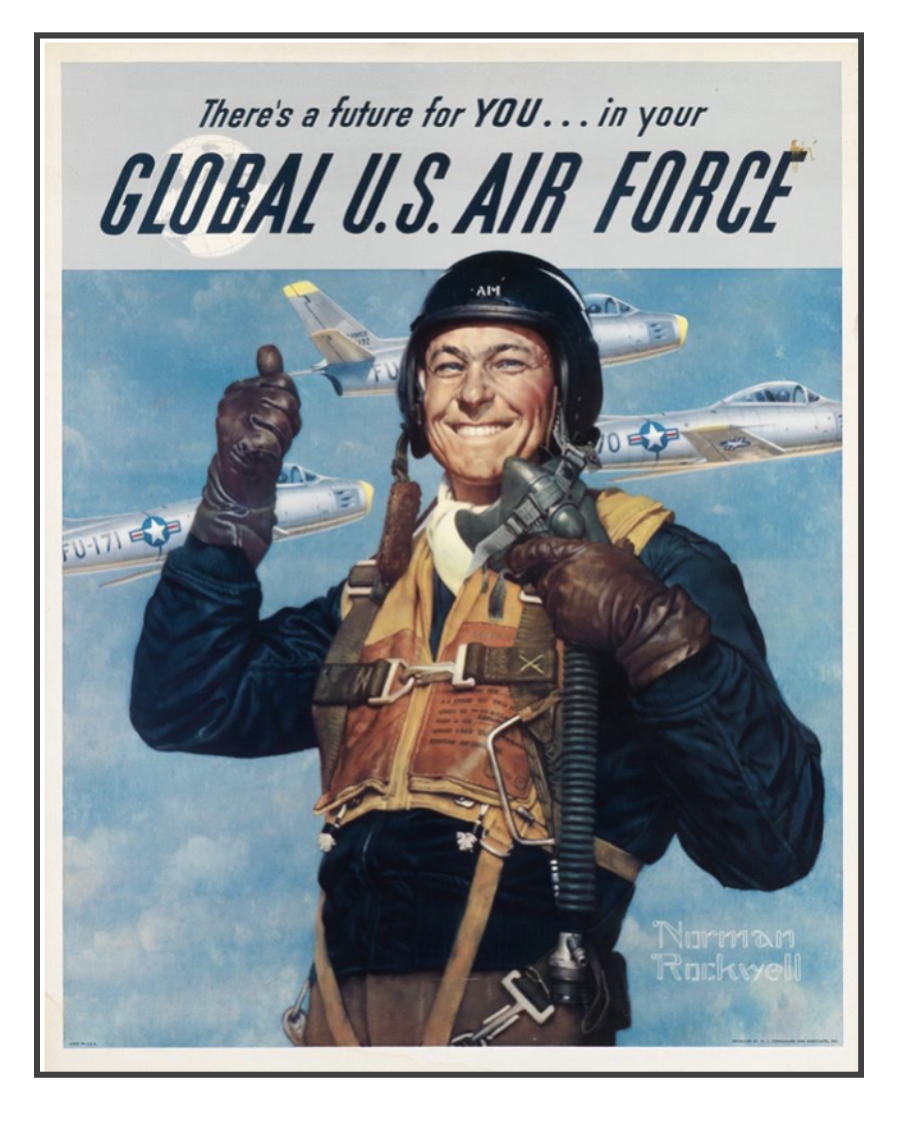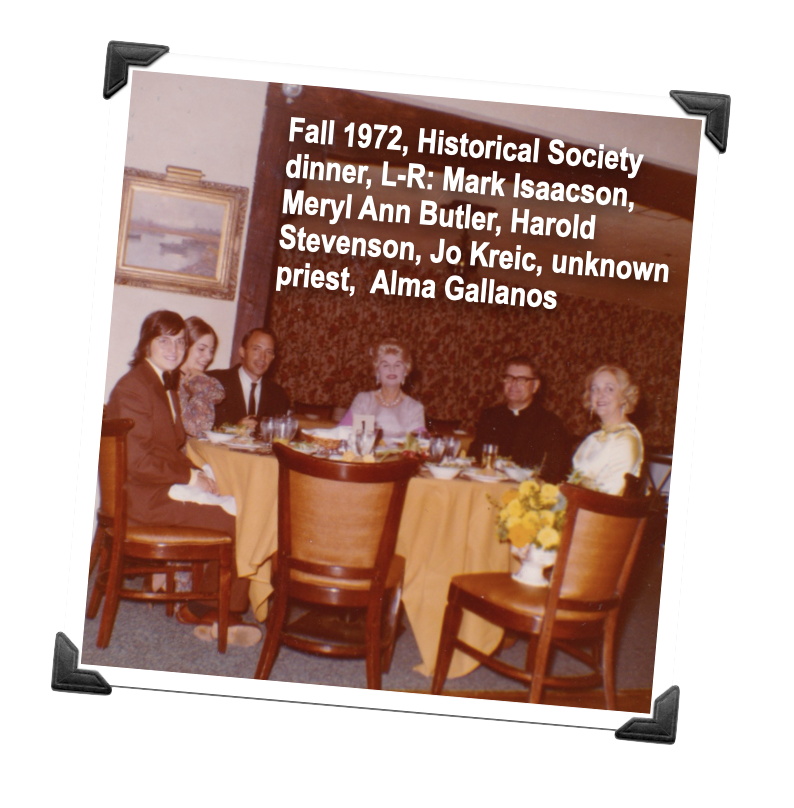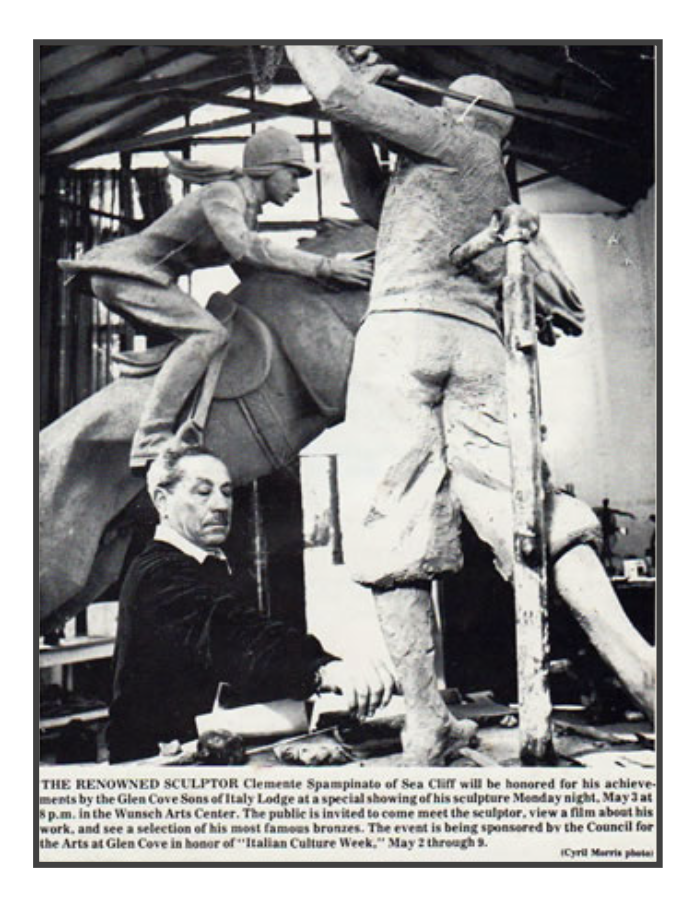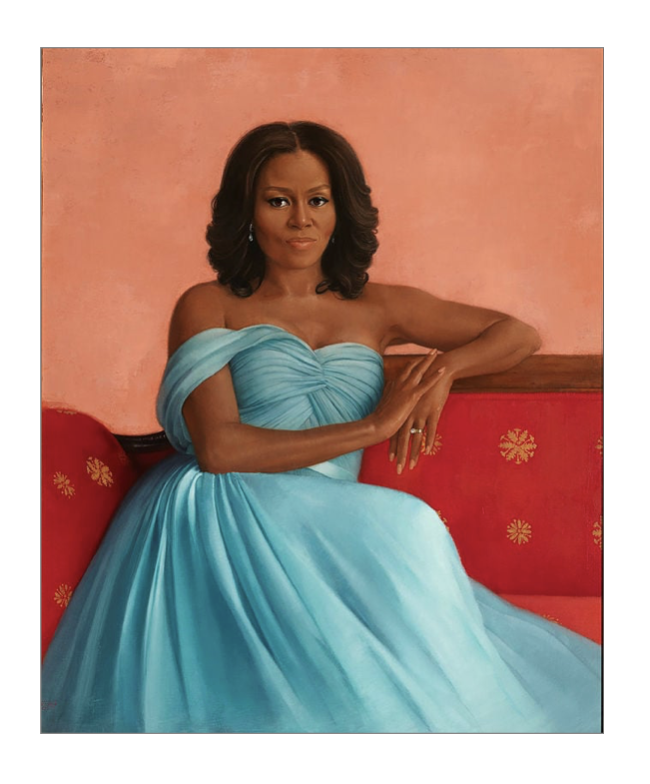The Stevenson Academy of Traditional Painting

Meryl Ann studied at the Stevenson Academy of Traditional Painting and the New Renaissance Atelier from January, 1968 until September, 1974.
The cover of the brochure for the school featured Meryl Ann at left, working on her painting, and Attila Hejja at right, posing with Mark Isaacson’s painting. Harold Stevenson wanted an image of a guy and a gal painting on the cover, but he thought Mark’s hair was too long! Attila had the right haircut, but his painting of this model was done from a very different viewpoint, so it wouldn’t have made sense to use his painting.
Meryl Ann says: I always wondered how they both felt about that compromise!
Note that my palette, seen in the center, is based on the Frank Reilly figure palette arrangement.

The large format, trifold
brochure promoting the school
featured student art on the inside. At left: still
life with drapery, and standing male nude by Meryl Ann
Butler, still life with teapot by Debbie Davis; middle section: self
portrait by Sharon Sprung and reclining nude charcoal drawing by Mark Isaacson; right section: standing male nude by Attila Hejja.
(Artists of other paintings unknown)
What is an art atelier?
Art ateliers were the most popular way of learning fine arts in the 18th and 19th centuries. Artists today who studied at the Art Students League (ASL) in New York (or trained with someone who studied there) can trace their art education lineage back to the atelier-style training prestigious French Academies of the 1800s and early 1900s including the École des Beaux-Arts and the Académie Julian (which admitted women.)
For instance, Meryl Ann Butler studied with Harold Stevenson, who studied at the ASL with Frank J. Reilly and others and with Norman Rockwell, who studied with George Brant Bridgman. Bridgman studied with Jean-Léon Gérôme, a master of the academic art of the 19th century, and considered one of the most important painters of the period.
The New Renaissance Atelier, which was the atelier program of Stevenson Studio and Gallery, was a rigorous training program. Students who were registered for all of the evening classes that were offered (Monday-Friday, 7:30 pm – 10:30 pm, and Tues-Thursday in the summer) were invited to also attend the atelier portion from 10 am – 5 pm. During the evening classes, atelier students painted from the live model, during the day time they worked on independent drawing and painting projects.

In the classrooms
Black and white photos, circa 1970/71.











Harold Stevenson
and Alma Gallanos
Stevenson
Harold Ransom Stevenson (1924-1985) was born in Brooklyn, and lived in Sea Cliff NY. After serving in WWII, he entered the Art Students League of NY in 1948 where he studied under Robert Beverly Hale, Louis Bouche, John Groth and Frank Reilly. He was one of a group of five advanced students who was selected to study with Norman Rockwell.


Mr. Stevenson worked as a freelance magazine cover artist and illustrator for a decade, executing over 60 covers in addition to other illustrations as well as private portrait commissions. When Norman Rockwell received a commission to paint a poster for the Air Force, he needed an expert to paint the planes in the background, so he asked Harold to do it—and shipped the painting to him!

In 1960 Harold left the illustration field and founded the Stevenson Academy of Traditional Painting in Sea Cliff, Long Island. When he and artist Alma Gallanos married in 1965, she joined him in teaching there.
In January 1972 the Stevensons started the New
Renaissance Atelier program. During the time that Meryl Ann attended the atelier program she modeled for Stevenson’s ” Cradle Song.” (The preparatory charcoal drawing was a portrait of her, but he changed the face in the final painting.)
Alma Gallanos Stevenson (1922-2009) studied at the Grand Central School of Art and was Art Director for Colgate-Palmolive. Her primary instructors were Douglas Prizer, Frank Reilly, Edgar Whitney and later, Harold Stevenson. Her award-winning art has been exhibited in the Springfield Museum, The National Academy of Design, the Hammond Museum, Lever House and The National Arts Club. She was a member of the Academic Artists Association, the American Artists Professional League, the Catharine Lorillard Wolfe Art Club, and the Hudson Valley Art Association. Her work is in many collections in the US.

Selected Early New Renaissance Atelier
Activities
most photos circa 1972-73




Harold Stevenson and the New Renaissance Atelier visited Mr. and Mrs. Mac Sykes, collectors of Stevenson’s work, Spring 1973 and the Sea Cliff studio of Italian- American sculptor, Clemente Spampinato.



Selected Stevenson Academy and Atelier Students
Nina Carisi studied with Harold R. Stevenson and Alma Gallanos Stevenson briefly in 1967, and introduced her Glen Cove High School buddy, Meryl Ann Butler, to the Stevensons’ studio school when they were both 14. Meryl Ann promptly signed up on the wait list and got in a couple of months later.
Later, Nina moved to California and her art evolved into detailed embroidered pictorial images. She was featured in the iconic book, Native Funk and Flash, and created wearable art for members of Santana and the Grateful Dead; Jerry Garcia serenaded her in her studio while she worked! Her artwork has been in galleries and museums and she continues to create art on the West Coast.

Meryl Ann Butler was the first of the Glen Cove High School graduates to become part of Harold and Alma Gallanos Stevenson’s New Renaissance Atelier. Meryl Ann had attended every one of the Stevensons’ terms during her 4 years of high school. Through the Glen Cove High School Art Club, she introduced both Mark Isaacson (who was a year younger) and Attila Hejja (two years younger) to Stevenson’s.
Within a couple of months of completing the atelier program at the Stevensons’, Meryl Ann opened her own successful art school in Louisiana, modeled after the Stevenson Academy. She operated Butler Art Studios for a decade until her husband died. Later, she switched to textile art for a couple of decades, due to developing an allergy to oil paint. She designed innovative methods such as her textile impressionism technique shown here in the portrait of the Dalai Lama, which uses only fabrics and threads to create a painted look. She taught traditional art and textile art at international, national and local venues and at Eastern New Mexico University, and has written hundreds of articles and published two books. When life calmed down and her allergies subsided, she opened her second art school in Norfolk, Virginia where she teaches traditional and visionary art. both in person and online. More on Meryl Ann’s journey, here.

The late Mark Isaacson, who was class president at Glen Cove High School, began art classes with Harold Stevenson and Alma Gallanos Stevenson in the early 1970s and later became one of the first atelier members along with Meryl Ann and Attila. After a stint in Paris, in 1981 Mark established an influential decorative arts gallery in Greenwich Village, Fifty/50.
True to the gallery name, it spotlighted mid-century furniture and decorative art, reshaping the collecting market. Fifty/50 specialized in Italian glass, particularly by the firm Venini, and according to the New York Times, “(Mark) was called on frequently for advice and was also a source for acquisitions by the Metropolitan Museum of Art, the Brooklyn Museum and the Victoria and Albert Museum in London.” Fifty/50 closed in 1993 after Mark died of AIDS at age 38.

The late Attila Hejja was a well known NASA artist and award-winning illustrator. Born in Budapest in 1955, Attila and his parents and older sister escaped during the Hungarian Uprising of 1956, their vehicle was pelleted by bullets as they sped away. Attila was going through a difficult time when he met Meryl Ann in the Glen Cove High School Art Club. When asked in an interview with classicaldomainli.com how he began his studies at Stevenson’s, he replied, “There was this pretty girl in high school and this pretty girl said to me, ‘You’re pretty good. I take lessons at Stevenson’s. You should take lessons.’”
What he didn’t say in the interview was that he had been deeply depressed and suicidal due to a combination of family stress and the belief that there appeared to be no pathway to fulfill his dream of becoming an artist. He had no transportation to get to the Stevensons classes, although he had money for tuition from a summer job. Meryl Ann encouraged him to sign up at Stevenson’s and drove him to and from classes until he got his license. That is why the inscription on the painting shown here says, “To my dear friend Meryl, who is responsible for all this!!”
Attila founded the Stevenson Academy of Fine Arts (SAFA) in Oyster Bay in 2004 to honor and continue Harold Stevenson’s teaching legacy. In 2005, Meryl Ann taught a summer portfolio development class there as guest instructor. Attila operated the Stevenson Academy of Fine Arts until 2007, when he passed away at 52.


Sharon Sprung and Meryl Ann attended elementary school together and both graduated from Glen Cove High School in 1971. Sharon headed off to study art at Cornell University while Meryl Ann went to Krause Art College at Syracuse University briefly, quickly returning to resume studies with Harold Stevenson and Alma Gallanos Stevenson at the atelier.
When Sharon returned to Glen Cove during a school break, she and Meryl Ann got together to share their portfolio work. Excited by what she saw Meryl Ann doing and by the learning potential at the Stevensons’, Sharon left Cornell and joined the atelier. She later studied at the Art Students League of NY where she is currently a sought-after teacher. Sharon has taught internationally and won copious awards. Her portrait of Congresswoman Jeannette Rankin is in the collection of the U.S. House of Representatives and more recently, her official portrait of Michelle Obama is in the collection of the White House. More info including her excellent educational videos are on her site at: www.sharonsprung.com


William Bond Jonas joined Harold Stevenson and Alma Gallanos Stevenson’s atelier in the early 1970s, and later apprenticed, by coveted invitation, with Nelson Shanks. He also studied at the Art Students League in New York under Robert Brackman and Robert Beverly Hale. Bill’s painting and popular print “Oyster Bay” is famous internationally, and he is currently active with commissions in his Oyster Bay studio. www.williambjonas.com

The late Robert Stark, Jr. (1933—2014) had a seat on the NY Stock Exchange for 17 years until he joined the Stevensons’ atelier, gradually shifting away from the financial sector toward full time fine art as a modern luminist with a focus on landscape and marine paintings. He was the founder and director of Nantucket’s oldest gallery, The Stark Gallery, on Old North Wharf. https://www.nantucketculturaldistrict.org/organization/ robert-stark-gallery/

Roger Goode studied at the Stevenson Academy of Traditional Painting, joining the atelier in 1974. Later he attended the Art Students League of New York on a merit scholarship where he studied with Daniel Greene and won the prestigious Art Students League Purchase Prize. After a career as Art Director of a computer magazine, he is currently active in his New Hampshire studio. His online gallery is at https://www.facebook.com/GoodeGallery


Paul Bachem studied with Harold R. Stevenson and Alma Gallanos Stevenson in the atelier and enjoyed a successful 30-year illustration career before devoting himself to plein air painting, for which he has accumulated many prestigious awards. His online gallery is at www.paulbachem.com

Doug Barnaby was not an atelier member although he studied weekly at Stevenson’s evening classes for many years, and later with Attila Hejja. His online gallery is at www.douglas-barnaby.pixels.com

